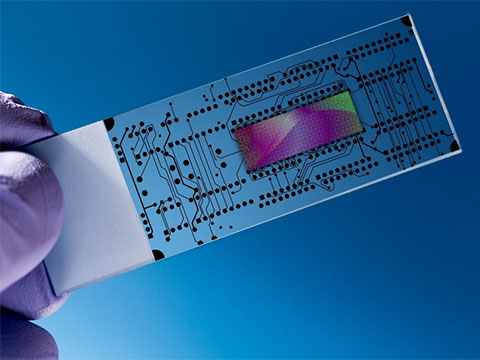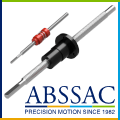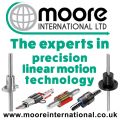
Posted to News on 25th Apr 2024, 13:00
Selecting the right motor for bench-top point-of-care testing devices
Compact and portable, bench-top point-of-care testing devices enable fast, reliable medical sample results. Considering the motion demands, including the needs for precision and repeatability, as well as energy efficiency and cost effectiveness, selecting the right solution is critical, as Portescap's Application Engineer, Dan Cisier, explains.

From blood analysis to saliva swabs, dependable sample testing plays a crucial role in our medical care, and accurate results are essential to make a diagnosis and prescribe the correct treatment. If a hospital has the resources, such as an in-house phlebotomy department, sample testing can take place within the medical setting, but this is not possible for doctor in private office.
Instead, sample analysis is commonly conducted by doctor at external lab creating delay in obtaining the result. This was notably emphasised during the Covid pandemic with PCR testing.
The most pressing challenge is the time sample testing takes, especially if analysis is conducted off-site. Any delay can have a crucial impact on patient health. Moreover, the expertise required to use lab equipment and perform tests correctly, combined with the reliance on intricate lab analysis equipment, means the resource cost is high.
To increase the speed of analysis, care centre and community general practitioners are increasingly turning to point-of-care testing (POCt) devices that can quickly carry out analysis in the immediate medical setting. While this solution doesn't necessarily replace lab-based testing, whether for the most comprehensive range of tests available, or for accuracy needs, they can provide a close match - and speed up diagnosis at the same time.
Handheld devices provide the most convenience and are well suited for single step tests, but they lack the adaptability required for complex tests involving multiple steps. Instead, bench-top point-of-care test devices are designed to conduct complex tests rapidly, and are sufficiently compact to enable installation in a doctor's office.
The importance of motion control
Given the requirement for numerous applications of motion within a bench-top POCt device, from valve actuation to movement of the samples, miniature motor specification is crucial. Overarching requirements include high reliability and repeatability. It's crucial that the motors ensure consistent and maintenance-free operation throughout the device's lifespan, guaranteeing accurate test results. This also means that at the outset, the system's control performance must be sufficient to meet the precision needs of each application.
As bench-top devices are designed for doctor's office or small care centre, they must also be compact. Bench-top POCt devices could host as many as 20 motors, so it's crucial that they have sufficient power density to enable the device's designer to achieve a small footprint.
With a relatively high volume of motors per device, cost effective technology is also key - balanced alongside the higher needs of reliability, accuracy, and repeatability. Of course, reliable and long-lasting motors also help achieve a lower total cost of ownership over the life of the device.
POCt device applications
Within a POCt device, chemical reagents are dispensed to react with the patient sample. These chemicals are contained within blisters that are punctured to allow the release of the reagents. Close control over a linear-guided bursting element is required, so the inherent precision achieved by a stepper motor is ideal. Moving in defined 'steps' ensures that this design of motor provides repeatable control. A step angle of 7.5deg, corresponding to a linear step size as small as 0.0127 mm, gives optimal positional resolution.
Another advantage of stepper motors is that their design achieves a more cost-effective solution, combined with control repeatability. The cost advantage is amplified as steppers can be used across several applications within a POCt device. A further example includes valve actuation, required to control fluid distribution within multiple microchannels that flow from disposable cartridges. To fit the available footprint, Portescap provides linear stepper motors down to a frame size of just 20 mm.
At the same time, to actuate the valves and hold them open, high holding force is necessary. Linear stepper motors high holding force, in unenergized state, drastically reduces battery usage for long term position holding. This feature is also useful when ensuring the security of the controlled environment necessary for sample testing. A high holding force is also required for the POCt device's door actuation and locking, so stepper motors are ideal for these applications as well.
Advanced technology integration
Moving liquid within the bench-top POCt device is also crucial, and this is accomplished with a compact, motor-driven pump. Smooth, continuous rotation at a high speed is necessary, so a brushed coreless DC motor is favourable and remain a cost-efficient solution. If space constraints are high, a brushless DC motor (BLDC) can be used, which present better efficiency than brushed coreless DC motor allowing important size reduction in motor dimension, albeit at a higher cost point.
However, achieving the optimal motion solution design for a bench-top POCt device typically requires more than motor selection alone. Considering the breadth of requirements, from precision through to energy efficiency, engineering design input is usually beneficial for the device designer.
As additional device integration may also be required, such as a gearbox, and with the potential for customisation, this can make engaging with a motion designer even more important for the long-term success of a project. Partnering with a miniature motor manufacturer like Portescap early in the design process can be the most effective way of getting the design right, at the first opportunity.















